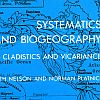| |
  
Mukul S. Bansal,
Eric J. Alm and
Manolis Kellis. Reconciliation Revisited: Handling Multiple Optima when Reconciling with Duplication, Transfer, and Loss. In RECOMB13, Vol. 7821:1-13 of LNCS, springer, 2013.
Keywords: duplication, from rooted trees, from species tree, loss, phylogenetic network, phylogeny, polynomial, Program RANGER-DTL, reconstruction.
Note: http://people.csail.mit.edu/mukul/Bansal_RECOMB2013.pdf.
Toggle abstract
"Phylogenetic tree reconciliation is a powerful approach for inferring evolutionary events like gene duplication, horizontal gene transfer, and gene loss, which are fundamental to our understanding of molecular evolution. While Duplication-Loss (DL) reconciliation leads to a unique maximum-parsimony solution, Duplication-Transfer-Loss (DTL) reconciliation yields a multitude of optimal solutions, making it difficult the infer the true evolutionary history of the gene family. Here, we present an effective, efficient, and scalable method for dealing with this fundamental problem in DTL reconciliation. Our approach works by sampling the space of optimal reconciliations uniformly at random and aggregating the results. We present an algorithm to efficiently sample the space of optimal reconciliations uniformly at random in O(mn 2) time, where m and n denote the number of genes and species, respectively. We use these samples to understand how different optimal reconciliations vary in their node mapping and event assignments, and to investigate the impact of varying event costs. © 2013 Springer-Verlag."
|
|
| |
    
Mukul S. Bansal,
Guy Banay,
Timothy J. Harlow,
J. Peter Gogarten and
Ron Shamir. Systematic inference of highways of horizontal gene transfer in prokaryotes. In BIO, Vol. 29(5):571-579, 2013.
Keywords: duplication, explicit network, from species tree, from unrooted trees, lateral gene transfer, phylogenetic network, phylogeny, Program HiDe, Program RANGER-DTL, reconstruction.
Note: http://people.csail.mit.edu/mukul/Bansal_Highways_Bioinformatics_2013.pdf.
|
|
| |
  
Celine Scornavacca,
Paprotny Wojciech,
Vincent Berry and
Vincent Ranwez. Representing a set of reconciliations in a compact way. In JBCB, Vol. 11(2):1250025, 2013.
Keywords: duplication, explicit network, from network, from rooted trees, from species tree, phylogeny, Program GraphDTL, Program TERA, visualization.
Note: http://hal-lirmm.ccsd.cnrs.fr/lirmm-00818801.
Toggle abstract
"Comparative genomic studies are often conducted by reconciliation analyses comparing gene and species trees. One of the issues with reconciliation approaches is that an exponential number of optimal scenarios is possible. The resulting complexity is masked by the fact that a majority of reconciliation software pick up a random optimal solution that is returned to the end-user. However, the alternative solutions should not be ignored since they tell different stories that parsimony considers as viable as the output solution. In this paper, we describe a polynomial space and time algorithm to build a minimum reconciliation graph-a graph that summarizes the set of all most parsimonious reconciliations. Amongst numerous applications, it is shown how this graph allows counting the number of non-equivalent most parsimonious reconciliations. © 2013 Imperial College Press."
|
|
| |

Luay Nakhleh. Computational approaches to species phylogeny inference and gene tree reconciliation. In Trends in Ecology and Evolution, Vol. 28(12):719-728, 2013.
Keywords: from rooted trees, from species tree, phylogenetic network, phylogeny, reconstruction, survey.
Note: http://bioinfo.cs.rice.edu/sites/bioinfo.cs.rice.edu/files/TREE-Nakhleh13.pdf.
Toggle abstract
"An intricate relation exists between gene trees and species phylogenies, due to evolutionary processes that act on the genes within and across the branches of the species phylogeny. From an analytical perspective, gene trees serve as character states for inferring accurate species phylogenies, and species phylogenies serve as a backdrop against which gene trees are contrasted for elucidating evolutionary processes and parameters. In a 1997 paper, Maddison discussed this relation, reviewed the signatures left by three major evolutionary processes on the gene trees, and surveyed parsimony and likelihood criteria for utilizing these signatures to elucidate computationally this relation. Here, I review progress that has been made in developing computational methods for analyses under these two criteria, and survey remaining challenges. © 2013 Elsevier Ltd."
|
|
| |
   
Thi-Hau Nguyen,
Vincent Ranwez,
Vincent Berry and
Celine Scornavacca. Support Measures to Estimate the Reliability of Evolutionary Events Predicted by Reconciliation Methods. In PLoS ONE, Vol. 8(10):e73667, 2013.
Keywords: duplication, from rooted trees, from species tree, phylogenetic network, phylogeny, polynomial, Program GraphDTL, reconstruction.
Note: http://dx.doi.org/10.1371/journal.pone.0073667.
Toggle abstract
"The genome content of extant species is derived from that of ancestral genomes, distorted by evolutionary events such as gene duplications, transfers and losses. Reconciliation methods aim at recovering such events and at localizing them in the species history, by comparing gene family trees to species trees. These methods play an important role in studying genome evolution as well as in inferring orthology relationships. A major issue with reconciliation methods is that the reliability of predicted evolutionary events may be questioned for various reasons: Firstly, there may be multiple equally optimal reconciliations for a given species tree-gene tree pair. Secondly, reconciliation methods can be misled by inaccurate gene or species trees. Thirdly, predicted events may fluctuate with method parameters such as the cost or rate of elementary events. For all of these reasons, confidence values for predicted evolutionary events are sorely needed. It was recently suggested that the frequency of each event in the set of all optimal reconciliations could be used as a support measure. We put this proposition to the test here and also consider a variant where the support measure is obtained by additionally accounting for suboptimal reconciliations. Experiments on simulated data show the relevance of event supports computed by both methods, while resorting to suboptimal sampling was shown to be more effective. Unfortunately, we also show that, unlike the majority-rule consensus tree for phylogenies, there is no guarantee that a single reconciliation can contain all events having above 50% support. In this paper, we detail how to rely on the reconciliation graph to efficiently identify the median reconciliation. Such median reconciliation can be found in polynomial time within the potentially exponential set of most parsimonious reconciliations. © 2013 Nguyen et al."
|
|
| |
  
Mukul S. Bansal,
Eric J. Alm and
Manolis Kellis. Reconciliation Revisited: Handling Multiple Optima when Reconciling with Duplication, Transfer, and Loss. In JCB, Vol. 20(10):738-754, 2013.
Keywords: duplication, from rooted trees, from species tree, loss, phylogenetic network, phylogeny, Program RANGER-DTL, reconstruction.
Note: http://www.engr.uconn.edu/~mukul/Bansal_JCB2013.pdf.
Toggle abstract
"Phylogenetic tree reconciliation is a powerful approach for inferring evolutionary events like gene duplication, horizontal gene transfer, and gene loss, which are fundamental to our understanding of molecular evolution. While duplication-loss (DL) reconciliation leads to a unique maximum-parsimony solution, duplication-transfer-loss (DTL) reconciliation yields a multitude of optimal solutions, making it difficult to infer the true evolutionary history of the gene family. This problem is further exacerbated by the fact that different event cost assignments yield different sets of optimal reconciliations. Here, we present an effective, efficient, and scalable method for dealing with these fundamental problems in DTL reconciliation. Our approach works by sampling the space of optimal reconciliations uniformly at random and aggregating the results. We show that even gene trees with only a few dozen genes often have millions of optimal reconciliations and present an algorithm to efficiently sample the space of optimal reconciliations uniformly at random in O(mn 2) time per sample, where m and n denote the number of genes and species, respectively. We use these samples to understand how different optimal reconciliations vary in their node mappings and event assignments and to investigate the impact of varying event costs. We apply our method to a biological dataset of approximately 4700 gene trees from 100 taxa and observe that 93% of event assignments and 73% of mappings remain consistent across different multiple optima. Our analysis represents the first systematic investigation of the space of optimal DTL reconciliations and has many important implications for the study of gene family evolution. © 2013 Mary Ann Liebert, Inc."
|
|
| |
  
Mehdi Layeghifard,
Pedro R. Peres-Neto and
Vladimir Makarenkov. Inferring explicit weighted consensus networks to represent alternative evolutionary histories. In BMCEB, Vol. 13(274):1-25, 2013.
Keywords: explicit network, from rooted trees, from species tree, phylogenetic network, phylogeny, Program ConsensusNetwork, reconstruction.
Note: http://dx.doi.org/10.1186/1471-2148-13-274.
Toggle abstract
"Background: The advent of molecular biology techniques and constant increase in availability of genetic material have triggered the development of many phylogenetic tree inference methods. However, several reticulate evolution processes, such as horizontal gene transfer and hybridization, have been shown to blur the species evolutionary history by causing discordance among phylogenies inferred from different genes. Methods. To tackle this problem, we hereby describe a new method for inferring and representing alternative (reticulate) evolutionary histories of species as an explicit weighted consensus network which can be constructed from a collection of gene trees with or without prior knowledge of the species phylogeny. Results: We provide a way of building a weighted phylogenetic network for each of the following reticulation mechanisms: diploid hybridization, intragenic recombination and complete or partial horizontal gene transfer. We successfully tested our method on some synthetic and real datasets to infer the above-mentioned evolutionary events which may have influenced the evolution of many species. Conclusions: Our weighted consensus network inference method allows one to infer, visualize and validate statistically major conflicting signals induced by the mechanisms of reticulate evolution. The results provided by the new method can be used to represent the inferred conflicting signals by means of explicit and easy-to-interpret phylogenetic networks. © 2013 Layeghifard et al.; licensee BioMed Central Ltd."
|
|
| |
|
|
 - forked on GitHub.
- forked on GitHub.



































































